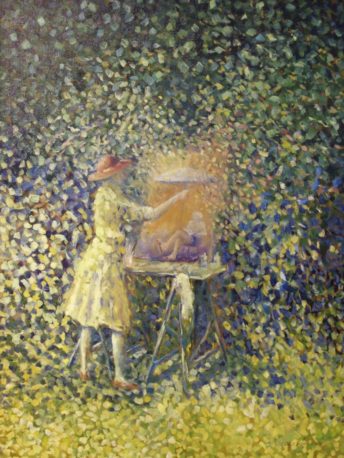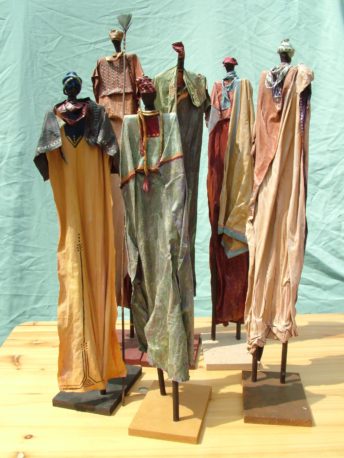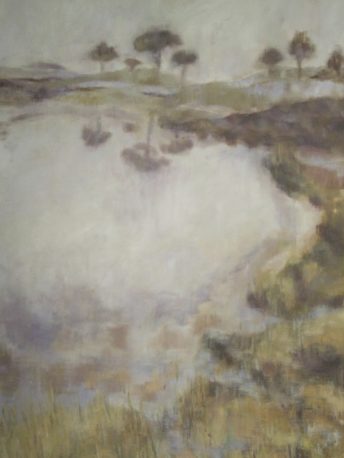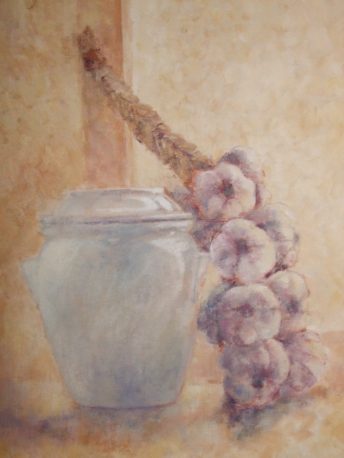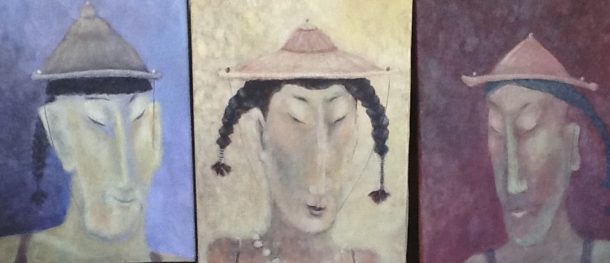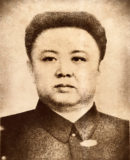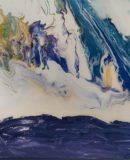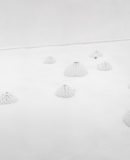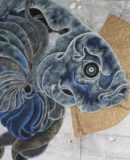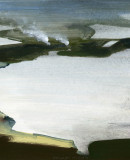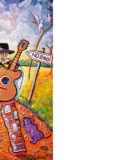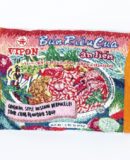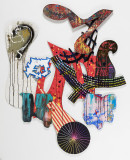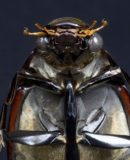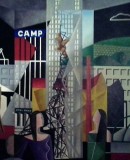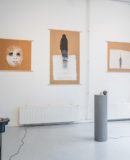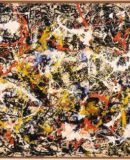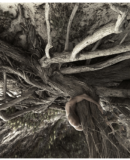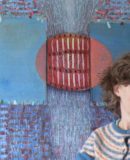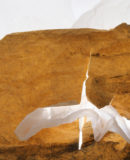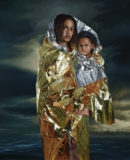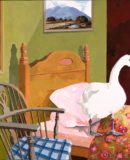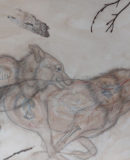World Fine Art Professionals and their Key-Pieces, 102 - Violet Roest
World Fine Art Professionals and their Key-Pieces, 102 – Violet Roest
Violet Roest lives in Scheveningen, in a beautiful building just behind the Boulevard. Her studio is on the second floor. Through large angled windows there is a lot of daylight. I see her African sculptures, sculptures of papier-maché in colored robes and on the left wall paintings of Chinese persons.
Violet Roest: “It is a great studio. In the morning it is quiet in terms of light, but at two o’clock it is within. That lasts all afternoon. And at five / six o’clock it falls in through the other large window.” In this studio she also gives drawing and painting classes and workshops.
The first emperor of China
The theme of her work she determines on the basis of the exhibitions in which she will participate. “This works best. There will be an exhibition, or I’m going to make a trip, and then I immerse myself in the theme. So I come to more focus and depth. And then I can go on. The canvas paints itself as it were and invites to do the next. That’s better than working ‘ins Blaue hinein’. Actually, my theme is connecting yourself. Then everything becomes interesting and inspiring.” In 2012 she made a journey through China, with her husband, Wouter Udo. One of the places they were going was Xian, between Mount Li and Xian City, where they visited the Terracotta Army. It is an archeological find of 9099 terracotta figures who were given as burial gifts to the first emperor of China, Qin Shi Huangdi. The remains in the tomb of the emperor (221-214 BC) belong to the UNESCO World Heritage.
Violet Roest: “It was impressive. You see a different dimension of life. The people did everything for the emperor.” Violet and her husband travelled by public transport and stayed in hostels. Roest: “Low budget, a bit like old hippies. In this way we had a lot of contact with the Chinese. They’re nice people. In hostels, they speak English well. It is different in the large ‘real’ hotels. There they don’t speak English and moreover in those hotels all sorts of things are wrong.”
Pointillist style
Last year they were in Tibet. “It was a beautiful experience to run the khora in Lhasa. The deep devotion that you saw there was touching. We have seen the thinness of the Tibetan landscape, the sheer desolation – a meditative experience – and the magnificent monasteries. I immersed myself in Tibetan Buddhism. The Chinese understand meanwhile that Buddhism is not to eradicate. And that it also brings in money.”
After the first China trip she began a series of portraits of Chinese people. She developed a pointillist style. Roest: “Color stains make up the shape. In this way I get away from the effigy, of a realistic image.” That doesn’t mean that she doesn’t love realism. “I’m not so abstract, although I have had abstract phases.” The pointillist style she developed further in paintings she was going to make for the Art Route Statenkwartier. There is still work in the pipeline about the Tibetan experience.
Ardèche
Violet Roest graduated in 1982 from the Royal Academy of Arts. Since then she has been active as an artist. With her husband Wouter Udo she also has a cookery school, at home at Scheveningen and in Huédour, in the Ardèche, France. In France you can take cooking classes, but also painting classes. And you can make walks. The whole summer Violet (and her husband) are in France.
She gladly participates in Art Routes and she is active in KopS, Arts at Scheveningen. Roest: “KopS has a store in the Keizerstraat in Scheveningen, works of the members are sold there. Further there is art on location from KopS. In nursing home Bosch & Duin, in care center Uiterjoon, in Huize Royal and in Scheveningen Library. It’s a fun, active club. We also often see a variety of things, recently we’ve been to the Gemeentemuseum, the Mesdag Noon, Flag Day and the Week of the Amateur Art.”
The ability ‘to see’
It’s all about the pleasure to discover and the need for connection. “At the moment I myself follow portrait classes again. I really love studying again.”
Asked about her philosophy, she says: “Sometimes the students I teach are not immediately satisfied with the results of their work. I tell them ‘This is where you are. It goes step by step’. Painting is a process. It is important that you learn to recognize the process. Often it is like the procession of Echternach, three steps forward, two steps back. It really is work, you have to study, experience disappointments and then continue. You have to have mental resilience. But you will also be rewarded. Your ability to look opens. Your eyes are more sensitive. You will also see more of yourself. You’re really going to see!”
Violet Roest teaches groups up to 10 people. In Scheveningen she has a schedule of four sessions: Tuesday morning, Tuesday evening, Wednesday morning, Wednesday evening. It’s also possible to book for sculpting workshops.
http://ifthenisnow.eu/nl/verhalen/de-wereld-van-de-haagse-kunstenaar-42-violet-roest
Disclaimer: The views, opinions and positions expressed within this guest article are those of the author Walter van Teeffelen alone and do not represent those of the Marbella Marbella website. The accuracy, completeness and validity of any statements made within this article are not guaranteed. We accept no liability for any errors, omissions or representations. The copyright of this content belongs to Walter van Teeffelen and any liability with regards to infringement of intellectual property rights remains with the author.


